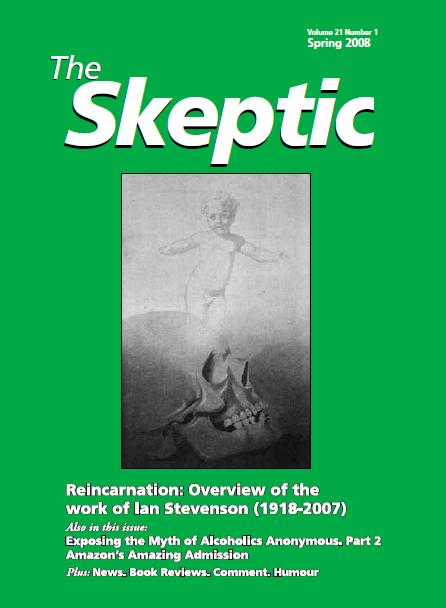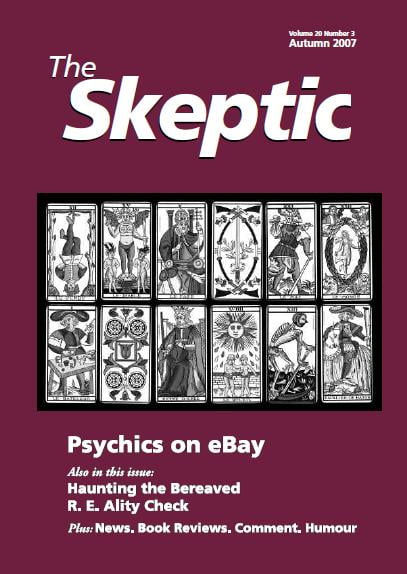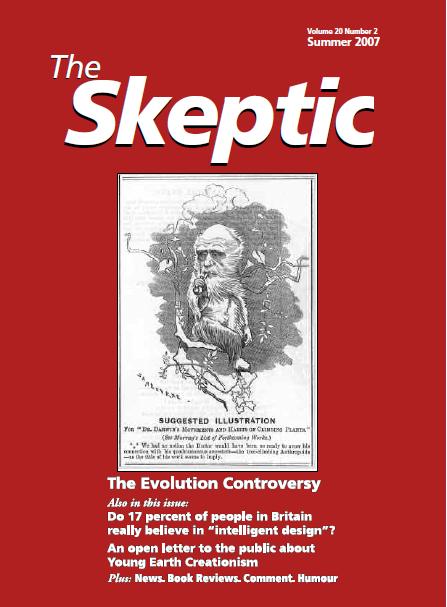Magazine
Volume 21 Number 1, Spring 2008
Features
Reincarnation: Overview of the work of Ian Stevenson (1918-2007)
Leonard Angel recounts his experience of a possible post-mortem encounter with the world's most famous investigator of reincarnation claims
Exposing the Myth of Alcoholics Anonymous. Part 2: Cult not Cure
Steven Mohr concludes his two-part investigation of Alcoholics Anonymous
Amazon's Amazing Admission
Mark Newbrook gives his reasons for being less than satisfied with Amazon's policy on book reviews
Volume 20 Number 4, Winter 2007
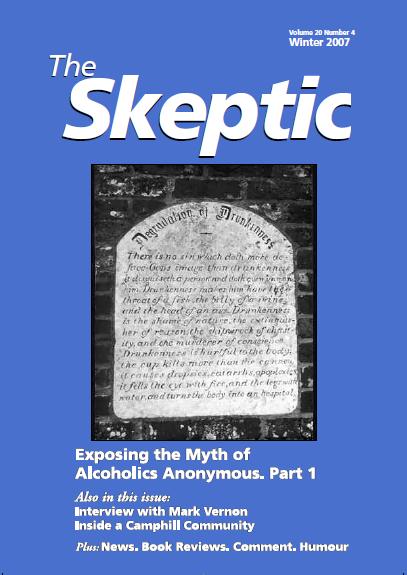 Features
Features
Exposing the Myth of Alcoholics Anonymous. Part 1: History and (Lack of ) Effectiveness
Steven Mohr begins his two-part investigation by examining the origins of the movement and evidence that the famous 12-step programme simply does not work
Believe it or Not
Sally Marlow interviews Mark Vernon about life, the universe and everything – but mainly agnosticism
Inside a Camphill Community
Matthew Provonsha reports on his disillusionment with life in a religious commune
Volume 20 Number 3, Autumn 2007
Features
Psychics on eBay
Emma-Louise Rhodes purchases tarot readings, all in the name of journalism
Haunting the Bereaved
Mark Williams reflects on the ‘psychic’ offerings of Colin Fry as presented in his TV show, 6ixth Sense
R. E. Ality Check: An Alternative Approach to Religious Education Damien Morris shows us one way to encourage enthusiasm and critical thought in classrooms
Volume 20 Number 2, Summer 2007
Features
The Evolution Controversy
Nell Barrie reflects upon the controversy that just will not go away…
An Open Letter to the Public about Young Earth Creationism
Julian W. Kirchherr, a German exchange student in the USA, battles the ideology of Young Earth Creationism
Adam Buick is doubtful that Britons had a fair chance to respond to the BBC’s questions on the origins of life
Volume 16 Number 4, Winter 2003
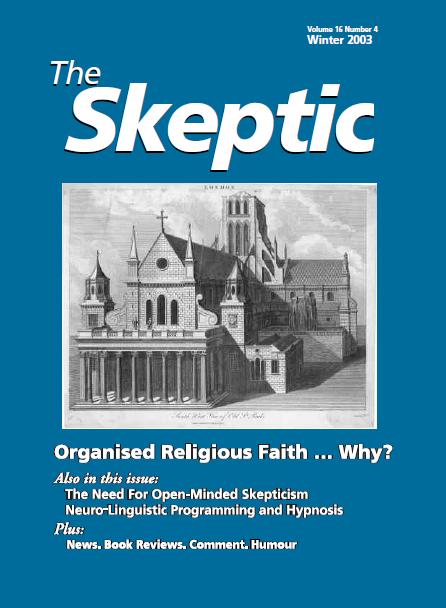 Features
Features
The Need For Open-Minded Scepticism
Rupert Sheldrake replies to David Marks
Power, Arcana, and Hypnobabble
Martin Parkinson reflects on the attractions of NLP
Organised Religious Faith … Why?
Douglas George tackles some of the structures and assumptions of religion
Parsnips and plugholes . . .
Rhyme and Reason
Steve Donnelly
I decided to make a New Year's resolution this year: to stop being weird. It all began in the fruit and vegetable section of the supermarket where I was closely examining the parsnips as I always do at this time of the year, just before my final lecture to first-year Physics undergraduates on classical mechanics. As the final topic on my lecture course, I talk about Newton's conic sections as these link the mundane with the cosmic and serve beautifully to illustrate the simplicity that often underpins the apparent complexity of the universe. What are conic sections? Well, if you take a solid cone and slice it in four different ways the edges of the different cuts form a circle, an ellipse, a parabola and a hyperbola respectively and these curves are precisely the orbits of celestial bodies -- planets, comets and others -- as they move through the heavens. Parsnips are the most conical vegetable in my supermarket and are easily sliced and so I have been using them for several years to illustrate conic sections in my lectures. All very logical and reasonable, you might say; however, that view didn't appear to be shared by the young woman in a Tesco uniform who noticed me perusing the parsnips. "Can I help you", she kindly enquired. "No it's OK", I replied. "I'm just trying to find the most conical parsnips".

